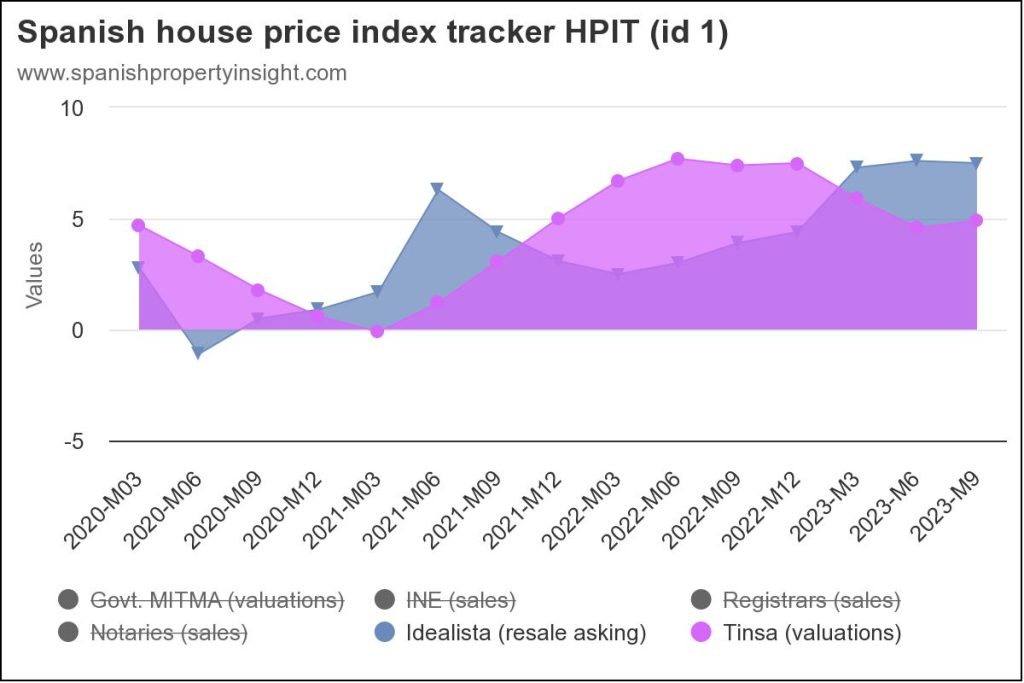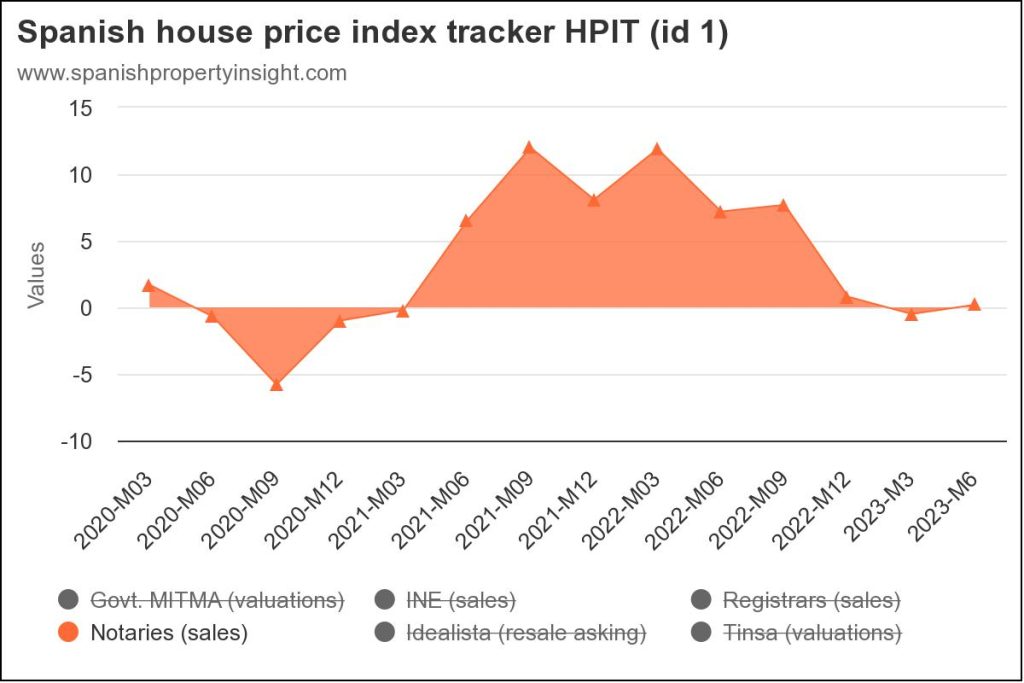A synopsis of the arguments presented in a recent article by the ‘Think’ research and analysis arm of Dutch bank ING explaining why Spanish house prices are rising against the eurozone trend. Even more recent data confirms that prices have continued growing in the third quarter, though one data source suggests the picture is not quite so rosy.
Spanish house prices have brushed off rising interest rates and other headwinds that have dragged down housing markets in other members of the Eurozone to increase 3.7pc in Q2 whilst prices declined 9.9pc in Germany, according to Eurostat data cited by ING and illustrated in the chart below.
“Despite the sharp rise in mortgage rates, Spanish house prices continue to grow and are holding up much better than in the rest of the eurozone,” writes Wouter Thierie, an economist at Dutch bank ING’s ‘Think’ egg-head division, and author of the article published on the 10th of October 2023.
The piece points out it’s not all plain sailing with new mortgage loans down 18.6pc in July, and sales down 10.1pc (data from the INE). “Still, the downturn is not as strong as in other countries,” writes Mr. Thierie, who then goes on to explain why Spanish house prices are holding up better than most Eurozone peers:
- Resiliente demand
- Strong growth in household formation driven by immigration
- Higher economic growth which ING forecasts will be 2.5pc in 2023 compared to 0.5pc Eurozone average
- Unemployment has fallen more than other countries, though still above average
- Higher nominal wage growth and lower inflation has meant real wage growth and spending power.
- A tight labour market and wage growth means greater disposable income
- Many households still have savings from the pandemic now being used to finance home purchases
- Strong foreign demand that explains why price growth is higher than average in areas like the Balearics, Canaries, and the Mediterranean coast.
- Supply constraints
- Reduced housing starts due to higher borrowing costs and building material prices
- ING forecasts
- Construction costs will remain high.
- “Net household growth is much higher than net supply growth, creating scarcity and exerting upward pressure on house prices.”
- The Spanish market did not overheat during the pandemic as much as other eurozone markets, leaving it better placed in the wake of the pandemic, and less prone to a big correction.
ING thinks that interest rates are likely to remain at current levels until the autumn of 2024, and they also expect that Spanish economic growth will slow down over the winter, weighing down on the property market. As a result ING forecast that Spanish house prices will continue to rise, but at a slower rate,
Taking all these factors into consideration, ING forecast 3pc nominal price increase this year (-0.6pc real) and 2pc nominal in 2024 (-1pc real). Looking further out into guesswork territory they forecast +3.8pc nominal (+1.5pc real) in 2025.
In conclusion, Spanish house prices are doing better than Eurozone peers and are expected to continue growing for the foreseeable future in nominal terms, though not in real terms until 2025.
Latest Spanish house price data
The article published at Think only looked at Q2 and July data from Eurostat and the INE. The latest data for September shows house prices up 4.9pc based on valuations (Tinsa) and 7.5pc based on asking prices (Idealista), with little sign of going negative anytime soon.


However, if you look at house price data from the association of Spanish notaries, the picture isn’t so rosy. According to the notaries, based on sales witnessed by them, house prices rose by just 0.2pc in nominal terms in Q2, and fell by 0.5pc in Q1. The Eurostat data comes from the Spanish Statistics Office (INE), based on data from the Land Registrars, who use their repeat sale formula to calculate house price change, whereas the notaires just compare the price of all sales from period to period. The methodology matters, and spits out quite different results, as illustrated in the final chart below.

